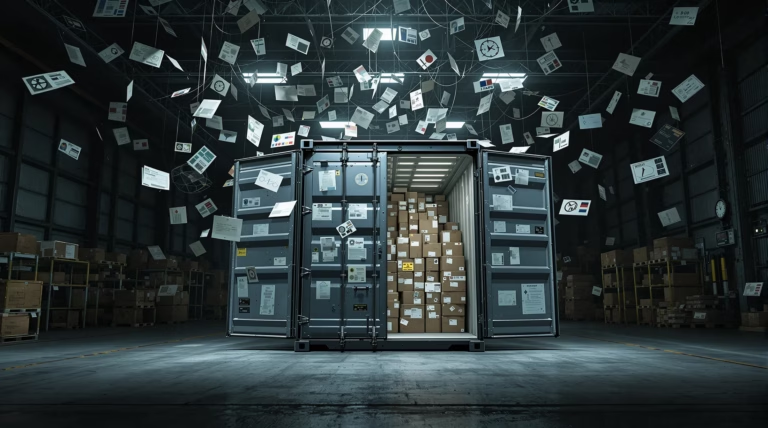Navigating the complexities of international shipping can be challenging, especially when it comes to understanding what happens after your shipment is released. This comprehensive guide will walk you through the entire process, from customs clearance to final delivery, helping you track and manage your international shipments effectively.
Understanding International Shipment Release
International shipment release marks a critical milestone in the global shipping process. It refers to the formal authorization granted by customs authorities allowing imported goods to enter a country after confirming compliance with all relevant import regulations. This process serves as a gateway between international transit and final delivery to the recipient.
When tracking international packages, understanding the ‘International Shipment Release’ status provides valuable insights into your package’s journey. This status indicates that your shipment has successfully cleared customs inspection and is proceeding toward final delivery. The time between release and delivery varies significantly depending on destination country, shipping method, and local logistics infrastructure.
What is International Shipment Release?
International shipment release is the official permission granted by a country’s customs authorities that allows an imported package to enter the destination country. This authorization occurs after customs officials have verified that the shipment complies with all applicable import regulations, including:
- Proper documentation verification
- Declared value assessment
- Adherence to restricted goods policies
- Physical inspection (when required)
- Payment of applicable duties and taxes
Role of FedEx in Shipment Release
FedEx plays a pivotal role in facilitating the international shipment release process. As a global logistics provider, FedEx acts as the intermediary between shippers, recipients, and customs authorities. Their services include:
- Submission of customs documentation on behalf of customers
- Pre-clearing shipments when possible
- Addressing documentation discrepancies
- Providing prompt customer notifications
- Managing final delivery processing
The Customs Clearance Process Explained
Customs clearance forms a critical gateway for all international shipments entering a country. This systematic process involves verification by government authorities to ensure compliance with import regulations, payment of applicable duties, and adherence to national safety and security standards.
Key Steps in Customs Clearance
| Step | Description |
|---|---|
| Document Submission | Submission of commercial invoice, packing list, and required certificates |
| Document Review | Verification of accuracy and completeness by customs officials |
| Duty Assessment | Calculation of applicable duties and taxes |
| Risk Assessment | Evaluation for potential inspection requirements |
| Release Authorization | Final approval for entry into the destination country |
Importance of Accurate Documentation
Accurate and complete documentation serves as the foundation for efficient customs clearance. Essential documents include:
- Commercial invoice with detailed product descriptions and values
- Packing lists verifying contents
- Certificates of origin for preferential duty rates
- Product-specific certifications
- Properly labeled shipping documents
Consistency across all paperwork is essential—conflicting information between documents raises red flags for customs officials. For businesses sending regular international shipments, implementing standardized documentation protocols and utilizing digital customs submission platforms can significantly reduce clearance errors and delays.
Duties and Taxes: What to Expect
International shipments face various customs clearance charges, primarily consisting of duties and taxes calculated based on the shipment’s declared value and classification. Import duties are government-imposed taxes on incoming goods, typically calculated as a percentage of the declared value. These rates fluctuate significantly based on product categories and origin countries, with some nations offering preferential rates through established trade agreements.
- Value-added tax (VAT) or goods and services tax (GST)
- Customs processing fees
- Merchandise processing fees
- Harbor maintenance fees (specific countries)
- Local consumption taxes
Recipients should note that these charges must typically be settled before package release. Carriers offer two primary payment options:
| Payment Method | Description |
|---|---|
| DDP (Delivered Duty Paid) | All charges pre-paid before shipment arrival |
| DDU (Delivered Duty Unpaid) | Recipient pays charges upon delivery |
Post-Release: What Happens Next?
After receiving international shipment release status, your package enters its final delivery phase. The shipment transitions from customs jurisdiction to the carrier’s delivery network, having cleared all necessary inspections and requirements. This status confirms official authorization for entry into the destination country and readiness for domestic processing.
Tracking Your Shipment
The ‘International Shipment Release – Import’ status indicates customs authorization for country entry, typically appearing after ‘Clearance in progress.’ For FedEx shipments, this means transfer to the destination country’s FedEx operating company. As your package progresses through domestic delivery, you’ll receive updates including:
- Arrival at local distribution center
- Departure for delivery
- Out for delivery notifications
- Estimated delivery window updates
- Final delivery confirmation
Expected Delivery Timelines
Standard international services typically complete delivery within two to five business days after customs release. Metropolitan areas generally experience faster deliveries than rural locations due to established delivery routes and proximity to distribution centers.
Delivery timelines can be affected by:
- Weather-related service disruptions
- Local holidays and operating hours
- Transportation infrastructure quality
- Country size and logistics network development
- Selected service level (express, priority, or standard)
Overcoming Common Challenges
Despite receiving release status, shipments may encounter various obstacles during their final journey. International shipping involves complex logistics networks across multiple countries, each with unique regulations and potential bottlenecks. Common complications include secondary inspections, documentation discrepancies, and transportation infrastructure delays.
Dealing with Delays and Inspections
When encountering post-release delays, immediate action can prevent minor issues from escalating. Contact carrier customer service for detailed information if tracking updates stall or show unexpected changes. For packages requiring additional inspection, prompt documentation submission helps minimize delays.
- Contact carrier customer service for detailed status information
- Submit requested documentation promptly
- Consider engaging customs broker assistance
- Utilize carrier escalation services for critical shipments
- Monitor tracking updates regularly
How Customs Brokers Can Help
Customs brokers act as essential partners in international shipping, particularly when navigating complex customs regulations and procedures. These licensed professionals can significantly streamline your shipping process when engaged early, helping identify potential compliance issues before they become problems.
- Documentation preparation and verification
- Accurate duty and tax calculations
- Direct communication with customs officials
- Representation during inspections
- Expedited clearance processing
- Compliance risk management
For businesses conducting regular international shipments, establishing a long-term relationship with a customs broker offers substantial benefits:
| Benefit | Impact |
|---|---|
| Reduced clearance times | Faster movement through customs processes |
| Lower compliance risk | Minimized chances of penalties and delays |
| Supply chain optimization | Expert guidance on international logistics |
Major carriers like FedEx provide integrated customs brokerage services that seamlessly connect with their transportation networks, offering comprehensive end-to-end shipping solutions. This integration ensures smooth coordination between shipping and customs clearance processes, reducing potential delays and complications in international shipments.






